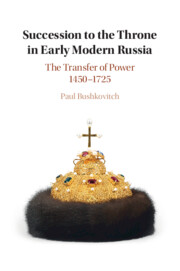Refine search
Actions for selected content:
8 results
Chapter 2 - The Rise of Empirical Meaning
- from Part I - Linguistic Implications of Kant’s Thought
-
-
- Book:
- Kant on Language
- Published online:
- 19 September 2025
- Print publication:
- 09 October 2025, pp 27-47
-
- Chapter
- Export citation
5 - Marine Conservation Zones Designation
-
- Book:
- Regulating the Sea
- Published online:
- 15 December 2022
- Print publication:
- 22 December 2022, pp 94-109
-
- Chapter
- Export citation
2 - Multi-level Regulation of English Marine Protected Areas
-
- Book:
- Regulating the Sea
- Published online:
- 15 December 2022
- Print publication:
- 22 December 2022, pp 30-48
-
- Chapter
- Export citation

Succession to the Throne in Early Modern Russia
- The Transfer of Power 1450–1725
-
- Published online:
- 29 March 2021
- Print publication:
- 18 March 2021
Epilogue and Conclusion
-
- Book:
- Succession to the Throne in Early Modern Russia
- Published online:
- 29 March 2021
- Print publication:
- 18 March 2021, pp 328-333
-
- Chapter
- Export citation
Preface
-
- Book:
- Succession to the Throne in Early Modern Russia
- Published online:
- 29 March 2021
- Print publication:
- 18 March 2021, pp vii-xiv
-
- Chapter
- Export citation
1 - Succession to the Throne, Autocracy, and Absolutism
-
- Book:
- Succession to the Throne in Early Modern Russia
- Published online:
- 29 March 2021
- Print publication:
- 18 March 2021, pp 1-32
-
- Chapter
-
- You have access
- HTML
- Export citation
2 - Designation and Heredity 1450–1533
-
- Book:
- Succession to the Throne in Early Modern Russia
- Published online:
- 29 March 2021
- Print publication:
- 18 March 2021, pp 33-68
-
- Chapter
- Export citation
